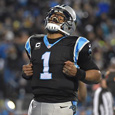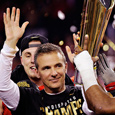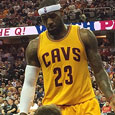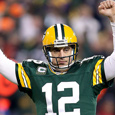Is the Raptors’ front office incompetent?
John Hollinger didn’t use the I-word, but he blasted the Toronto front office for not understanding the basic rules of the salary cap with regard to the Matt Barnes Debacle.
The whole Matt Barnes saga was jaw-dropping: It appears both Barnes’ agent and the Raptors’ front office leaked to the media that Barnes would sign a two-year, $9 million deal with the Raptors in a sign-and-trade — in fact, every major outlet reported it.
Only one problem: The deal wasn’t even remotely legal under the salary-cap rules, revealing a shocking ignorance of a very important piece of the business on the part of NBA professionals.
Look, this is pretty basic stuff. I’ve seen stories suggesting this was some inscrutable piece of salary-cap arcana, and it’s just not true. For starters, a sign-and-trade deal has to be at least three years. Has to. That’s not a difficult rule to understand. I’m pretty sure all of you got it immediately. That’s why every single sign-and-trade deal that any of these guys has ever done has been for at least three years. You’d think they’d at least know from experience. But right there, much energy was spent negotiating a deal that couldn’t happen.
Second, Orlando couldn’t sign-and-trade Barnes under those terms. He had no Bird rights because he had played only one year on his current contract; the most he could be offered by the Magic this season was about $1.9 million. Again, this isn’t some obscure footnote; it comes up every single year because so much of the league’s rank and file are on one-year deals.
Finally, Orlando could have re-signed Barnes using its midlevel exception, except that (A) the Magic had already used it, and (B) you can’t do a sign-and-trade using the midlevel exception. Toronto couldn’t use its midlevel on Barnes either, since it had already been bestowed on Linas Kleiza.
In a nutshell, the deal had to be a sign-and-trade for at least three years, starting at no more than $1.9 million a year, or it couldn’t happen. This was obvious to anyone with any knowledge of the salary-cap rules. That it wasn’t to the two parties involved is disturbing.
In defense of Toronto and Bryan Colangelo, Hollinger said himself that he didn’t know for sure who leaked the information about Barnes’ supposed deal, though Barnes himself was confident enough about the signing that he even tweeted the news on his feed. So the deal must have progressed at least that far without Toronto realizing that it was an impossible trade to make.
Based on what I’ve seen of Colangelo’s work in Toronto, I’m not a fan. T.J. Ford, Jermaine O’Neal, Shawn Marion — none of those acquisitions worked out. The Turkoglu signing was a moderate disaster and he mishandled/misread Chris Bosh’s situation over the course of the season. He did end up getting a couple of (very late, by the look of it) first round picks and a big trade exception from Miami as part of the Bosh sign-and-trade that could turn into something, but it’s pretty obvious now that the Raptors should have traded Bosh before February’s trade deadline in order to get a good prospect out of the deal. Who knows — maybe the Raptors would be sitting on Andrew Bynum or Derrick Favors (via the Nets’ first round pick) had they shopped Bosh earlier in the year.
Hindsight is 20/20, but one wonders what the team would look like now if the Raptors had drafted Brandon Roy in 2006 instead of Andrea Bargnani. Bargnani is developing and offers some hope for the future, but Roy and Bosh would have been devastating in the pick-and-pop. Instead, Colangelo drafted a power forward to play alongside his best player, who was also a power forward.
Again, a number of teams passed on Roy that night, but still, what if…
Follow the Scores Report editors on Twitter @clevelandteams and @bullzeyedotcom.








